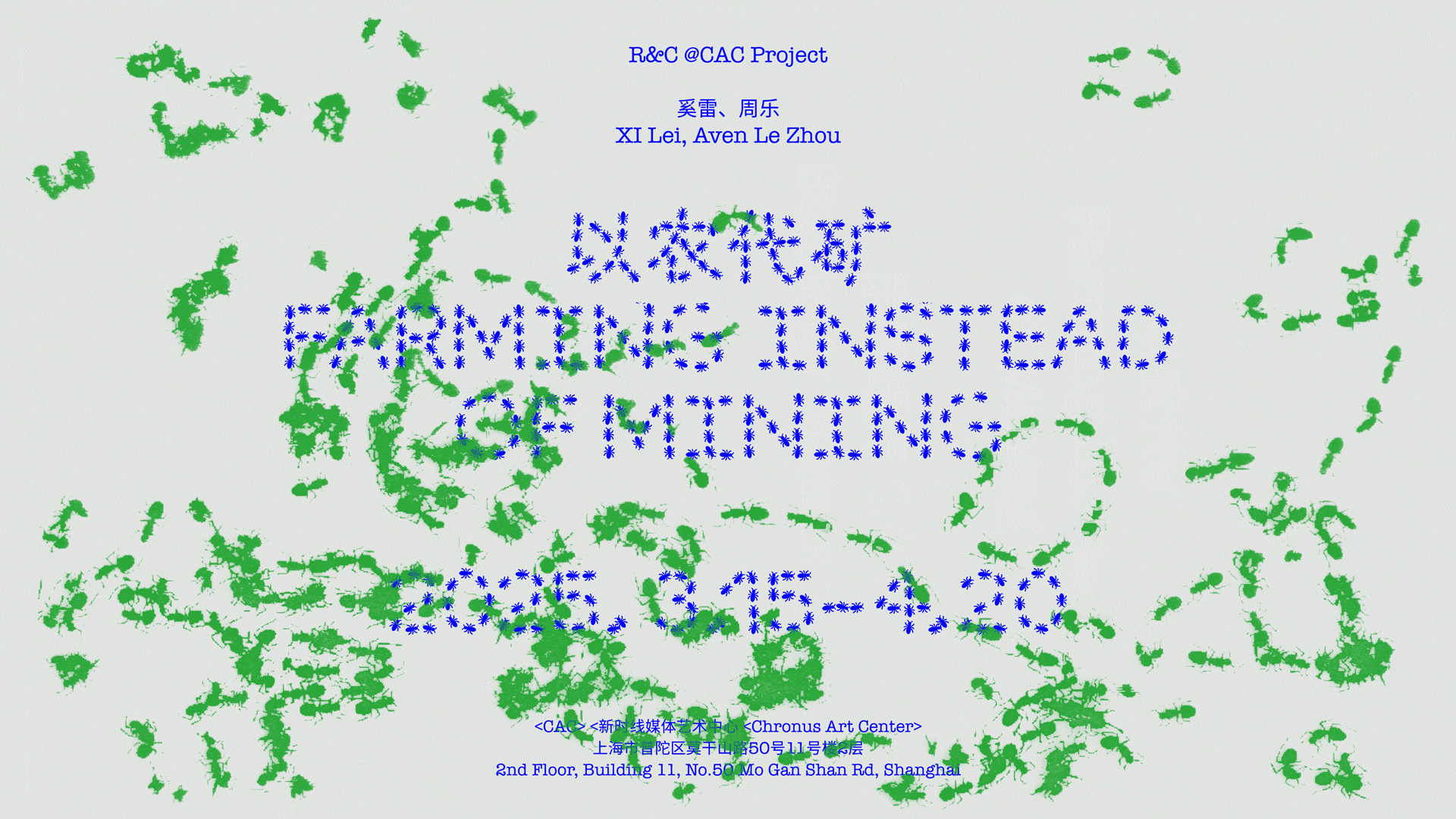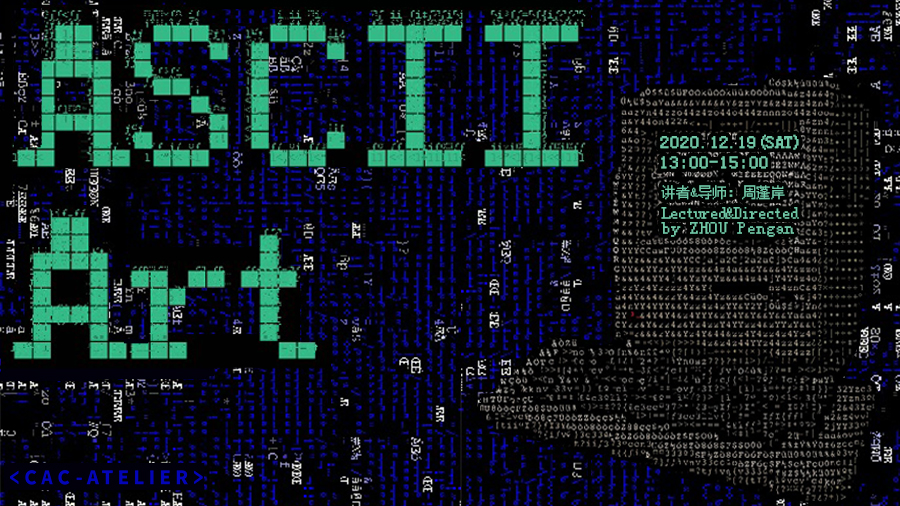Haptic Field
Artist: Chris Salter, collaboration with TeZ Maurizio Martinucci
Duration: 2016.07.09 - 09.04
Venue: Chronus Art Center
Address: BLDG.18, No.50 Moganshan RD., Shanghai
*Ticket Price:
Weekday:¥35/person(Online Price:¥30/person)
Weekend:¥45/person(Online Price:¥40/person)
Chronus Art Center (CAC) is pleased to present Haptic Field, an exhibition by the American artist Chris Salter from July 9th to September 4th. The exhibition showcases a large participatory multi-sensory installation by Chris Salter in collaboration with the Italian artist and musician TeZ. Haptic Field merges contemporary fashion, wearable technology and an exploration of the senses. Employing garments especially designed and produced by the Chinese fashion brand JNBY, the installation creates a singular and uncanny physical experience, giving us the impression that our senses are stretched beyond the body’s boundaries.
During the opening weekend, the artist will also deliver a lecture entitled "FROM SENSORS TO SENSATION: The 'Sensory Turn' in Contemporary Art" which is also part of CAC's Leonardo Art, Science and Technology Lecture Series. Together with Ian Hattwick, the artist will also lead a workshop entitled "Playing with Touch" on 10th July
Specifically developed and produced for CAC, Haptic Field lies at the intersection of four diverse areas: art involving the senses, new wearable technology, sensory anthropology – the study of the senses cross-culturally, and the science of haptics. It forms part of the artists’ continued exploration into the extension of the human sensorium within our contemporary technosphere.
In Haptic Field, the entire CAC space is transformed into a continually shifting, hallucinatory, almost dream-like environment. Nothing is what it seems and vision gives way to the experience of other senses like touch, sound, proprioception, the experience of time and the invisible presence of others. In the exhibition, up to twenty visitors can be accommodated at any point in time. Visitors arriving at the CAC space will find a dressing area with a full-length mirror in front of which they put on the specially designed garments with the help of a set of video instructions. Each of the garments consists of a one-piece unit with attached hood and visor that visually suggests a cross between science fiction and high fashion. The hood of the garment completely blurs and distorts the visitors’ ability to see. The entire visual sense transitions into a blurry, non-defined field, as if walking through thick fog. In the meantime, with a series of new custom designed wireless actuators securely attached to each of the costumes, a range of vibrations are felt. These feelings of touch snake across the visitors’ bodies, from the legs to the arms and chest in continuous movement giving the impression that one’s body has been possessed by unfathomable outside forces. Light emitted from the visitors’ bodies and from light sources in the environment resembles fleeting, undefined forms, continually appearing and disappearing around one’s body and changing in color and intensity. Light, sound and touch become distributed among bodies – dynamically shifting back and forth, like an immense haptic field – a distributed field of touch.
Haptic Field places touch - a sensory modality that has long been viewed as a forgotten, “unhistoricized” sense, as the cultural historian Constance Classen claims - at the centre of the experience. The installation thus seeks to create a more experiential understanding of the “virtual senses of touch” and how it crosses over and “interferes” with the other senses. Through this interference, we newly question the classic reduction of senses into five discrete categories for which the Greek philosopher Aristotle is blamed. We demonstrate that the senses are not separate and that in fact, the boundaries between our different senses are culturally shaped and constructed. Furthermore, the installation explores how new technologies work to increasingly extend, shape and transform our sensorial experience within our socio-technical environment.
The wireless devices employed in Haptic Field are designed and developed specifically by the IDMIL (Input Devices and Music Interaction Laboratory) at McGill University in Montreal. These devices go beyond the current conception of haptic technologies that approach tactile experience as information transferred between senders and receivers of “messages.” Instead, through artistic practice, Haptic Field brings new thinking and experience to the emerging socio-cultural paradigm of touch and technology.
Credits:
Haptic Field
A multi-sensory installation by Chris Salter + TeZ + JNBY China
Direction/Composition: Chris Salter + TeZ in collaboration with Ian Hattwick
Clothing Design: JNBY; Designer: GONG Dayong
Technical Development: Input Devices and Music Interaction lab (IDMIL), McGill University
Technical Supervision: Marcelo Wanderley
Technical Direction: Ian Hattwick
Additional Development: Ivan Franco, Julian Neri, Alex Nieva, Patrick Ignoto and Louis Fournier
Management: Remco Schuubiers – DISK Agency/Berlin
Production: xmodal/Montreal + CAC
With the support of the Fonds de Recherche du Québec - Société et Culture
+ CAC
Biographies:
Chris Salter
Chris Salter is an artist, Concordia University Research Chair in New Media, Technology and the Senses, Co-Director of the Hexagram Network for Research-Creation in Media Art, Design, Digital Culture and Technology, Director of Hexagram Concordia and Associate Professor, Computation Arts in the Department of Design and Computation Art at Concordia University, Montreal. He studied philosophy and economics at Emory University and completed a PhD in directing and dramatic criticism at Stanford University where he also researched and studied at CCMRA. He collaborated with Peter Sellars and William Forsythe/Frankfurt Ballet in the 1990s. Salter’s work has been shown at major international exhibitions and festivals in over a dozen countries including the 2008 Venice Architecture Biennale (Venice), National Art Museum of China (Beijing), Lille 3000 (Lille), Fondarie Darling (International Biennale of Electronics Arts – Montreal), HAU3 (Berlin), Laboral Centro de Arte y Creacion Industriel (Gijon, Spain), Nuit Blanche (Paris), Vitra Design Museum (Germany), EXIT Festival (Maison des Arts, Creteil-Paris), Ars Electronica (Linz), Pact Zollverein (Essen, Germany), CTM (Berlin), Villette Numerique (Paris), Todays Art (the Hague), Todays Art.jp (Tokyo), Meta.Morf (Norway), Mois Multi (Quebec), Transmediale (Berlin), Place des Arts (Montréal), Elektra (Montréal), the Banff Center (Banff), Dance Theater Workshop (New York), V2 (Rotterdam), SIGGRAPH 2001 (New Orleans), Mediaterra (Athens) and the Exploratorium (San Francisco), among others.
Salter is a regular presenter at national and international conferences, has given numerous invited talks at universities and festivals worldwide and has sat on many juries including the Prix Ars Electronica, among others. In addition to his artistic work, Salter’s critical research can be found in his seminal book Entangled: Technology and the Transformation of Performance (MIT Press, 2010) and Alien Agency: Experimental Encounters with Art in the Making (MIT Press, 2015). He is currently working on a new collaborative book project for MIT Press focused on the contemporary interconnections between art, research and the contemporary technosphere.
TeZ Maurizio Martinucci
TeZ Maurizio Martinucci (aka TeZ) is an Italian interdisciplinary artist and independent researcher, living and working in Amsterdam, who has collaborated with, amongst others, Adi Newton, Scanner, Kim Cascone, Saverio Evangelista, Taylor Deupree, Sonia Cillari, Chris Salter, Honor Harger, Luca Spagnoletti and Domenico Sciajno. In 1990 he attended the school for Computer Music Programmers in Rome with many of Italy's best known specialists in sound and art technologies. He participated in workshops at the "Centro di Sonologia Computazionale" of the University of Padova, and at the "Tempo Reale" institute in Florence directed by Luciano Berio. Since the late eighties TeZ has been composing electronic and experimental music and has released records with various projects (M.S.B., DoseZero, Nukleus, Clock DVA). TeZ uses technology as a means to explore perceptual effects and the relationship between sound, light and space. He focuses primarily on generative compositions with spatialized sound for live performances and installations. In his works he adopts custom developed software and hardware, featuring original techniques of sonification and visualization to investigate and magnify subtle vibrational phenomena. In recent years his research has extended to the creation of specific architectural structures and unconventional sound and light propagation methods to enhance immersivity and multisensory perception. TeZ’s works have been shown at prestigious art venues and festivals such as: Ars Electronica and Lentos Kunstmuseum (Linz/AT), Dali’s Museum (St Peterburg/USA), Biennale of Digital Art (Montreal/ CA), Roma Europa Festival, NIMK (Amsterdam, NL), Transmediale (Berlin/DE), Wood Street Galleries (Pittsburgh/USA), _V2 (Rotterdam/NL), Le Cube (Paris/FR) among many others. TeZ is also the brainfather of the ‘Optofonica’ Lab for Synesthetic Art-Science, located in Amsterdam.
JNBY
Founded in 1994, JNBY is a highly popular and recognized women’s clothing brand that from the very start has attracted a group of supporters who share the same philosophy as the company.. Along with on-going research into new products and designs, today, JNBY is the most representative women’s clothing brand in China. Its slogan “Just Naturally Be Yourself” (JNBY) is deeply rooted in the hearts of our customers. Our brand successfully combines aesthetic elements like “fashion, energy, interest, openness” with a focus on research and development of new materials. The designers’ ideas and intuitions are combined with a long experience in the craft of clothing design. We convey a sense of curiosity and interest in culture and the world to independent, romantic and elegant young women between the age of 25 and 40. Our brand inspires a feeling for the wonder and poetry of everyday life, which is the secret of our success in keeping the brand energetic and vigorous.
The Input Devices and Music Interaction Laboratory (IDMIL)
The Input Devices and Music Interaction Laboratory (IDMIL) was established in March 2005. The IDMIL is affiliated with the Music Technology Area of the Schulich School of Music at McGill University, Montreal, Quebec, Canada. The laboratory deals with projects related to the topic of human-computer interaction, the design of musical instruments and interfaces for musical expression, movement data collection and analysis, sensor development, and gestural control. The IDMIL is directed by Prof. Marcelo M. Wanderley, and is funded through grants from the Canadian Foundation for Innovation, Fonds Quebecois de Recherche sur la Nature et les Technologies, Natural Sciences and Engineering Research Council of Canada, Quebec's Ministry of Economic Development and McGill University. The IDMIL is associated with the Sound Processing and Control Laboratory on various projects related to gestural control of sound synthesis and mapping strategies for music performance. It is also affiliated with the Centre for Interdisciplinary Research in Music Media and Technology (CIRMMT), a multi-disciplinary research group centered at the Schulich School of Music of McGill University.











